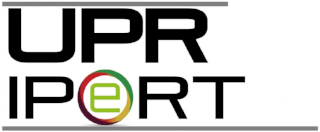Puerto Rico launches technology for the prevention and early detection of neurological diseases such as Alzheimer’s.
Submitted on 19 October 2025 - 7:37pm
This article is reproduced by CienciaPR with permission from the original source.
CienciaPR Contribution:
Original Source:
By:

Puerto Rico made history in neurological care by becoming the first U.S. jurisdiction to introduce the Delphi-MD device — a technology that promises to revolutionize the prevention and early detection of conditions such as Alzheimer’s, dementia, and Parkinson’s disease.
The medical device, endorsed by the U.S. Food and Drug Administration (FDA), is used to evaluate brain function. Developed by QuantalX Neuroscience, the Delphi-MD is based on an innovative technology that uses a high-resolution magnetic pulse to stimulate specific brain networks.
“What this study really does is use a technique called focused transcranial magnetic stimulation to apply small magnetic pulses to specific areas of the skull, especially the frontal area. A cap similar to that used for electroencephalograms (which is placed on the patient) has sensors that track how the brain responds to these stimuli. That’s where we can observe the brain cells’ response to stimulation and compare it with that of people of the same age,” explained Dr. Marie Muntaner from the Oxylife Wellness Center clinic in Condado, where the device is currently available exclusively.
El Nuevo Día attended a training session for the new machine, which promises a non-invasive, painless, radiation-free procedure. The test — conducted on a 59-year-old volunteer — takes about 20 minutes, with results available in 10 minutes. The patient lies down, awake, with eyes closed.
The process begins with entering the patient’s information into the device interface. After preparation — which includes measuring head circumference, cleaning the forehead, scalp, and earlobes, and placing a sensor-equipped cap on the patient’s head — the device emits magnetic pulses directed to specific centers of the brain’s networks through the Delphi-MD electromagnetic probe. According to Muntaner, this provides insight into the person’s neuronal health.
Anna Hutorskoy, Customer Success Manager at QuantalX Neuroscience — visiting Puerto Rico to lead the trainings — explained that the system automatically processes and analyzes the data to generate a clinical report. This analysis provides quantitative information about brain function and health, which doctors can then use to inform patients about their condition and recommend next steps, if necessary.
The database used for patient comparison currently includes individuals aged 50 to 75, though Muntaner confirmed that the study is available to people outside that range.
However, the FDA clarified in its latest approval of the technology that “the Delphi-MD system should not be solely relied upon to make or confirm a diagnosis.”
“The true advantage of this system lies in early detection. From our experience managing Alzheimer’s and other neurological diseases, we know that the earlier a condition is detected and some form of therapeutic intervention begins, the better the preservation of brain function over time — and with it, the patient’s quality of life,” said Jorge Galva, former executive director of the Health Insurance Administration and partner at CuraNova Group, the organization responsible for bringing the medical device to Puerto Rico.
Meanwhile, Arminda Figueroa, president of CuraNova Group, shared that the goal is to make the technology available in clinics in Mayagüez, Ponce, Guaynabo, Ceiba, and Fajardo within the next six months — expanding access at a time when over 54,000 people are listed in the Registry of Alzheimer’s Disease, Huntington’s Disease, and other Dementias, though the true prevalence is estimated to range between 80,000 and 100,000.
At present, the Delphi-MD technology is not covered by health insurance plans, so those interested must pay an introductory fee of $299 for the test and result interpretation. That price is available for a limited time; later, the cost is expected to remain under $500, according to Figueroa.
“I believe the whole idea behind introducing this new technology is to provide a tool for the earliest possible detection of neurological conditions in our population. Because the test is quick, relatively affordable, and minimally invasive, we think it will be an attractive and accessible option for people — motivating them to evaluate their neurological health even before showing any symptoms,” Galva added.







